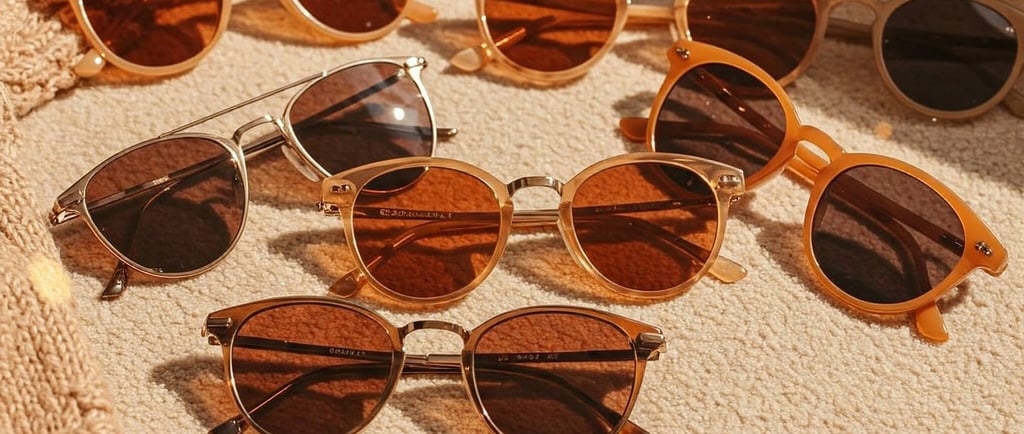How do the sunglasses suppliers survive the competition despite offering same quality yet different branding, different price?


In the competitive sunglasses industry, suppliers offering products of similar quality differentiate themselves through strategic branding and pricing. These tactics enable them to attract diverse consumer segments and maintain profitability despite market saturation.
1. Branding and Perception
Branding plays a pivotal role in consumer perception and purchasing decisions. Suppliers invest in creating strong brand identities that resonate with target audiences. For instance, luxury brands like Chanel and Dior offer sunglasses as "small luxuries," providing consumers with accessible indulgences that reinforce brand prestige. This strategy not only drives short-term revenue but also fosters long-term customer engagement.
The dominance of companies like Luxottica exemplifies the impact of branding. By managing multiple high-profile brands, Luxottica maintains significant market control, allowing for premium pricing strategies that capitalize on brand recognition and consumer loyalty.
2. Pricing Strategies
Pricing serves as a key differentiator, enabling suppliers to position their products across various market segments:
Premium Pricing: Luxury brands command higher prices by emphasizing superior design, exclusivity, and status. This approach appeals to consumers seeking prestige and are willing to pay a premium for it.
Competitive Pricing: Brands targeting the mass market adopt pricing strategies that align with competitors, focusing on value and affordability without compromising on quality.
Discounting and Promotions: Offering periodic discounts, especially during events like Cyber Monday, allows brands to attract price-sensitive customers while maintaining brand image. For example, Amazon's substantial discounts on designer sunglasses during Cyber Monday exemplify this tactic.
3. Product Differentiation and Innovation
Suppliers differentiate their offerings through unique designs, innovative features, and collaborations:
Design Innovation: Incorporating distinctive styles, colors, and materials helps brands stand out. Collaborations with designers or artists can result in limited-edition collections that generate buzz and appeal to fashion-forward consumers.
Technological Features: Integrating functionalities such as UV protection, polarized lenses, or smart technology appeals to consumers seeking both style and practicality.
4. Targeted Marketing and Consumer Engagement
Effective marketing strategies are crucial in a saturated market:
Social Media Marketing: Utilizing platforms like Instagram and Facebook allows brands to showcase products in aspirational settings, engage with consumers, and drive online sales.
Influencer Collaborations: Partnering with influencers provides authentic endorsements and expands reach to diverse audiences.
Experiential Marketing: Creating immersive experiences, such as pop-up shops or interactive campaigns, fosters deeper connections with consumers and enhances brand recall.
5. Navigating Market Challenges
Suppliers must remain agile to address challenges such as market saturation and changing consumer preferences:
Consumer Trends: Staying attuned to trends like sustainability and ethical production can influence purchasing decisions and open new market opportunities.
Competitive Analysis: Regularly assessing competitors' strategies helps identify gaps and areas for differentiation.
In summary, sunglasses suppliers navigate a competitive landscape by leveraging branding, strategic pricing, product innovation, and targeted marketing. By understanding consumer desires and market dynamics, they can effectively differentiate their products and sustain profitability despite offering similar quality items.
